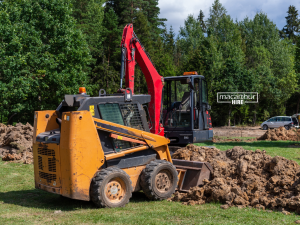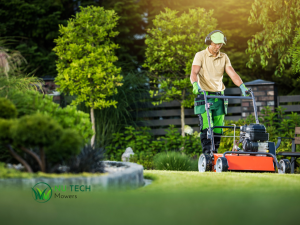The timber veneer market plays a pivotal role in the global wood industry, offering a sustainable solution that marries the aesthetic appeal of solid wood with the efficiency and flexibility of thinner wood products. This introduction explores the intricate dynamics of the global timber veneer market, emphasizing its significance across various industries including furniture manufacturing, construction, and interior design.
Overview of the Timber Veneer Market
Timber veneer, a thin slice of wood obtained from peeling or slicing large logs, has become increasingly popular for its ability to provide the luxurious look of solid wood while minimizing environmental impact. The global market for timber veneer is characterized by a complex network of production, supply, and demand, influenced by factors such as sustainability practices, consumer preferences, and technological advancements. This section delves into how these dynamics shape the market, highlighting the importance of veneer in promoting responsible wood usage.
Major Producers and Exporters
The global landscape of timber veneer production is diverse, with specific countries and regions emerging as leaders due to their rich forestry resources, advanced manufacturing capabilities, and stringent sustainability standards.
Global Production Hotspots
Countries like Brazil, Canada, China, and Russia are among the top producers and exporters of timber veneer, each contributing significantly to the global supply. These nations boast vast forested areas, enabling them to sustain large-scale veneer production operations. The section explores how these global hotspots meet the world’s increasing demand for high-quality veneer, and how their geographical and climatic conditions influence the types of timber available for veneer production.
Characteristics of Leading Veneer Producing Regions
Each veneer-producing region offers timber with unique characteristics, influenced by the local climate, soil, and forestry practices. For instance, European oak veneer, known for its strength and beauty, differs markedly from the richly textured and colored veneers produced from African mahogany. This diversity allows for a wide range of applications and design aesthetics, catering to varied market needs and preferences.
Sustainability in Veneer Production
As environmental consciousness grows, sustainability has become a cornerstone of the timber veneer industry, guiding production practices and consumer choices alike.
Sustainable Forestry Practices
Sustainable forestry practices, including selective logging, reforestation, and adherence to international certification standards (such as FSC and PEFC), are crucial for ensuring the long-term viability of timber resources. This section examines how these practices are implemented in veneer production, highlighting the industry’s commitment to minimizing environmental impact while meeting global demand.
Challenges in Maintaining Sustainability
Despite the industry’s efforts, maintaining sustainability in veneer production faces several challenges. These include illegal logging, deforestation, and the complexities of certifying sustainability across global supply chains. The discussion will focus on the obstacles encountered in ensuring sustainable practices and the strategies employed by producers, governments, and NGOs to overcome these challenges, ensuring the ethical production of timber veneer.
Ethical Sourcing and Transparency
The Importance of Ethical Sourcing
Ethical sourcing in the timber veneer industry is paramount not only for the conservation of the environment but also for the welfare of local communities dependent on forestry. Ethically sourced timber veneer ensures that the wood is harvested responsibly, adhering to laws and regulations that protect ecosystems and biodiversity. This practice minimizes deforestation, reduces carbon emissions, and promotes the sustainable management of forest resources. Moreover, it supports the socio-economic development of local communities by ensuring fair labor practices and contributing to local economies. Ethically sourced veneer, therefore, represents a commitment to environmental stewardship and social responsibility.
Ensuring Supply Chain Transparency
Achieving supply chain transparency is critical in verifying the ethical sourcing of timber veneer. Strategies to ensure this transparency include:
- Certification and Labeling: Utilizing third-party certifications such as FSC (Forest Stewardship Council) or PEFC (Programme for the Endorsement of Forest Certification) as indicators of ethically sourced materials.
- Supplier Audits: Conducting regular audits of suppliers to ensure compliance with ethical sourcing standards and practices.
- Traceability Systems: Implementing traceability systems that track the journey of veneer products from the forest to the consumer, providing clear documentation of their origin.
- Stakeholder Engagement: Engaging with local communities, NGOs, and environmental organizations to gain insights and feedback on sourcing practices.
Market Trends and Consumer Demand
Shifts in Consumer Preferences
The timber veneer market is witnessing significant shifts in consumer preferences, with a growing demand for products that are not only aesthetically pleasing but also environmentally sustainable. Consumers are increasingly aware of the impact of their purchasing decisions on the planet and are seeking out veneer products that align with their values of conservation and social equity. This shift is driving producers to adopt more sustainable practices in veneer production, from harvesting to manufacturing, to meet this evolving demand.
Innovation and Technological Advancements
Technology plays a crucial role in adapting to consumer demands for sustainable and high-quality timber veneer products. Innovations in the industry include:
- Improved Harvesting Techniques: Technologies that allow for precision harvesting, reducing waste and minimizing impact on the environment.
- Advanced Manufacturing Processes: Developments in manufacturing that enhance the efficiency and quality of veneer production, such as digital veneer matching and automated grading systems.
- Eco-Friendly Finishes and Adhesives: The use of non-toxic, low-VOC finishes and adhesives in veneer products, improving indoor air quality and reducing environmental impact.
- Product Innovation: The creation of new veneer products that offer enhanced durability, ease of use, and unique design options, catering to the modern consumer’s aesthetic and functional requirements.
Navigating the Global Veneer Market
Strategies for Sourcing Sustainable Veneer
In the quest for sustainable veneer sourcing, businesses face the challenge of balancing cost, quality, and environmental impact. Key strategies include:
- Prioritizing Certified Suppliers: Choose suppliers that hold credible certifications like FSC or PEFC, which indicate adherence to sustainable forestry practices.
- Building Direct Relationships with Foresters: Engage directly with foresters or cooperatives practicing sustainable forestry, offering greater transparency and traceability.
- Conducting Due Diligence: Perform thorough background checks on suppliers to ensure their practices align with your sustainability criteria, including labor practices and ecological impact.
- Leveraging Technology for Traceability: Utilize blockchain and other digital tools to track the journey of veneer products from the forest to the final product, ensuring authenticity and ethical sourcing.
- Educating Teams and Customers: Foster a culture of sustainability within your organization and educate customers on the value of sustainable veneer, potentially justifying a higher price point for responsibly sourced materials.
The Future of Timber Veneer Sourcing
As global awareness and demand for sustainability grow, timber veneer sourcing practices are poised for significant evolution:
- Increased Demand for Certification: Certification will become not just a value-add but a necessity as consumers demand proof of sustainability.
- Greater Use of Technology: Advancements in technology will enhance traceability and efficiency, making sustainable sourcing more accessible and verifiable.
- Collaborative Efforts for Sustainability: Cross-industry collaborations will emerge to tackle shared challenges in sustainability, from reforestation projects to innovations in recycling and reuse of veneer products.
- Shift Towards Local and Regional Sourcing: To reduce carbon footprints, there will be a move towards sourcing veneer from local or regional forests, supported by advancements in agroforestry and sustainable forest management practices.
Conclusion
Sustainability is not just an ethical choice but a strategic imperative for the timber veneer market. Ethical sourcing and sustainable practices ensure the long-term viability of both the market and the global forestry resources it depends on. By adopting sustainable sourcing practices, businesses contribute to a more responsible and resilient veneer market, safeguarding biodiversity, supporting local communities, and meeting the growing consumer demand for environmentally friendly products. The future of the veneer market hinges on its ability to embrace sustainability, with every stakeholder playing a pivotal role in shaping a greener, more ethical industry.











